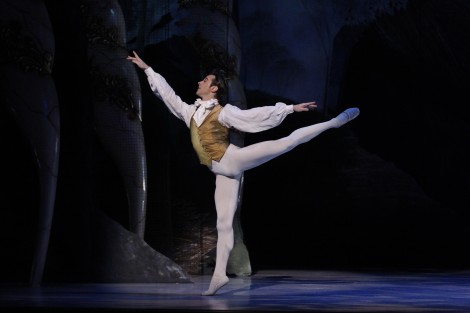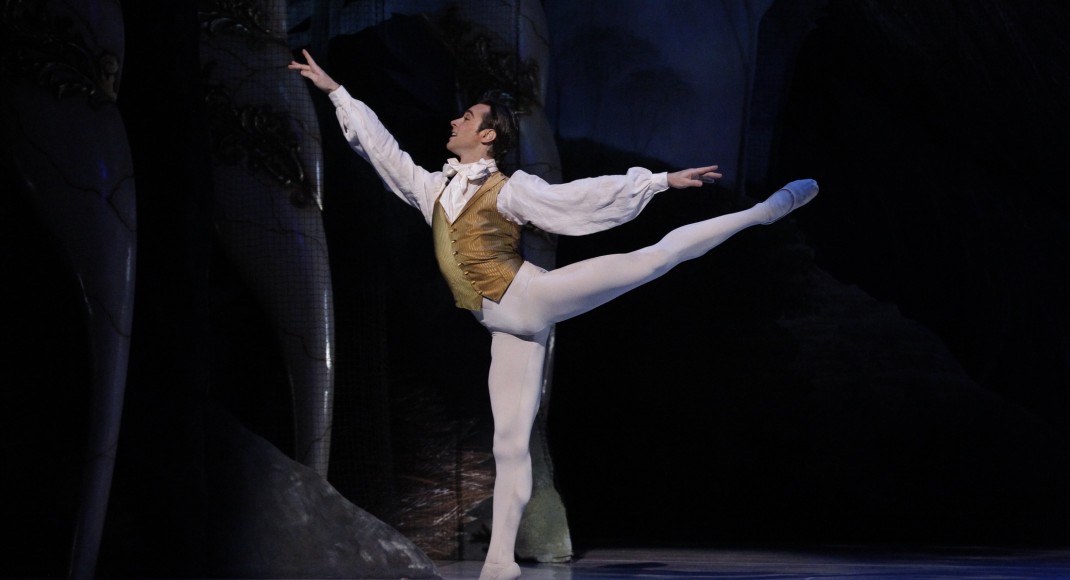5 December 2015 (matinee), Joan Sutherland Theatre, Sydney Opera House
My second viewing of David McAllister’s Sleeping Beauty simply confirmed my opinion that this production is the most over-designed ballet I have ever seen since I saw my first professional ballet performance many years ago. Sold-out houses mean nothing artistically as far as I am concerned. At least this time, however, I knew what to expect and so made a concerted effort to block out the design and look at the dancing, as much as was possible.
This matinee performance belonged to Miwako Kubota and Daniel Gaudiello as Aurora and Prince Desiré respectively. As the sixteen year old Aurora, Kubota performed charmingly and was technically close to faultless. But it was in the wedding scene that she took my breath away. She was radiant. She brought so much light and shade to her dancing and, amazingly, the light and shade came mostly through her technical execution. She leant into movements, she used her head and shoulders beautifully, every movement had an expressive power. I especially loved that part in one of her variations in the pas de deux where her delicate wrist movements, enhanced by such a beautiful smile, such a fluid body, and such perfect feet, told the story of how she had grown from a child to a woman, reflecting back to her father’s similar mime sequence at her sixteenth birthday.
As her prince, Gaudiello once again showed what a wonderful dancer and partner he is. I love watching him take care of his ballerina and, as usual, his technical execution of the choreography was outstanding. I was especially taken by those moments in his variation in the coda of the grand pas de deux where his light and beautifully elevated cabrioles to the front (also beautifully beaten) were followed by a sweep of one leg, the foot passing through first position, into an attitude at the back. That foot caressed the floor making those small movements that join larger ones so clear.
The only other male dancer who has made me so aware of the beautiful tiny details that make up larger and more obvious movements is Ethan Stiefel, whom I was once lucky enough to see as Solor in Makarova’s Bayadère.
For the first time in a long time I felt that this grand pas de deux, with Kubota and Gaudiello performing as they did, was actually grand. Hurrah!
Sympathy to the gentleman in the Garland Dance in Act I who had a major wig malfunction, but bouquets to the other gentleman who, wig intact, managed to remove the fallen part from the floor. The dance went on, the gentleman left the stage and returned with wig fixed. But sadly that Garland Dance has, in this production, lost all its honourable simplicity and choreographic design as a result of those garlands that looked quite burdensome with far too many lolly-pink and ghastly-green flowers (matching the ladies’ dresses that are similarly coloured and burdened).
As I had previously, I enjoyed the newly-imagined role of Carabosse, which was carefully thought through by former Royal Ballet dancer Gillian Revie. Benedicte Bemet, fresh from the triumph of receiving the award of the 2015 Telstra Ballet Dancer of the Year, was partnered by Christopher Rodgers-Wilson in the Bluebird pas de deux. Both danced nicely but did not have the attack of Ako Kondo and Chengwu Guo. They need a little more time to reach greater heights in roles such as the Bluebird pas de deux. I’m sure those greater heights are on their way.
Michelle Potter, 7 December 2015
Featured image: Daniel Gaudiello as the Prince in The Sleeping Beauty. The Australian Ballet, 2015. Photo: © Jeff Busby

My earlier review of the Australian Ballet’s new production of The Sleeping Beauty is at this link.
